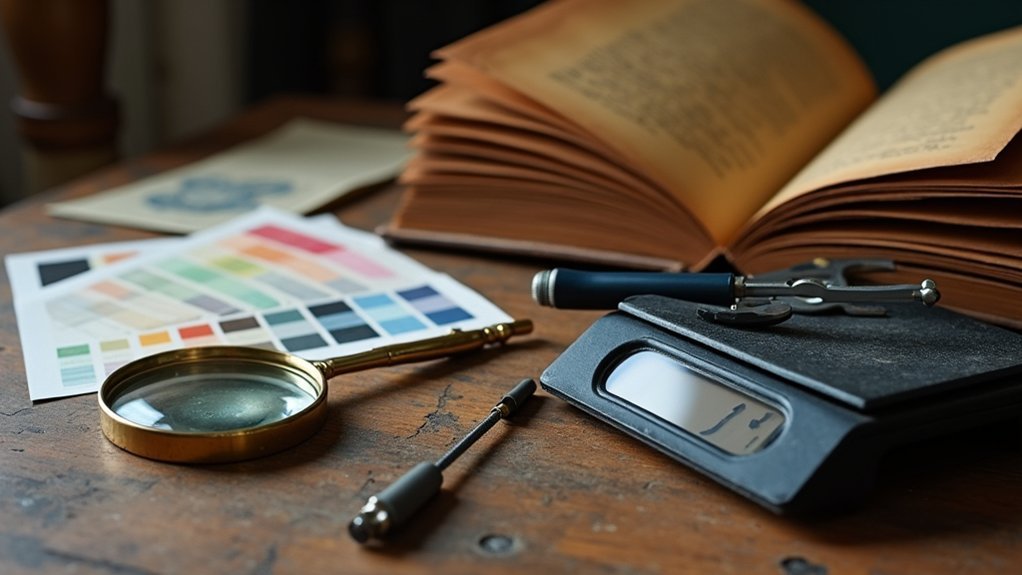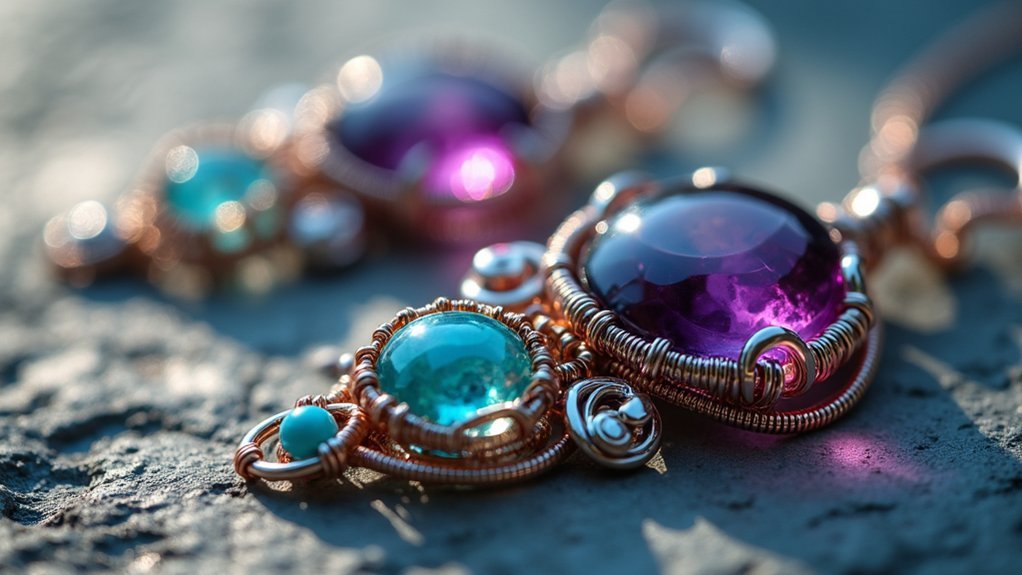You’ll achieve professional-quality results in your artisan projects by selecting the right casting material from three proven options: polyurethane resin for precision detail work, silicone rubber for flexible molds, and investment plaster for high-temperature metal casting. Polyurethane resin offers exceptional detail reproduction with fast 3-4 minute working times, while silicone rubber provides unmatched flexibility for intricate jewelry molds. Investment plaster withstands temperatures exceeding 1,000°F for metal casting applications. Your project’s specific requirements will guide your material choice for best outcomes.
Polyurethane Resin for Precision Detail Capture

When you’re working on intricate artisan pieces that demand exceptional detail reproduction, polyurethane resin stands out as a top choice for precision casting.
This material excels in mold making and casting applications, delivering superior precision detail capture that’s vital for intricate designs in artisan crafts.
You’ll appreciate its excellent tooling capabilities and fast-working properties, with a working time of just 3-4 minutes and a demould time of approximately 30 minutes.
The durability surpasses plaster alternatives, making it ideal for various applications.
However, you must plan carefully due to the short working time.
Thorough mixing is essential to avoid uneven results.
With multiple formulations available, you can select the perfect type for your specific project requirements.
Silicone Rubber for Flexible Jewelry Molds
While polyurethane resin delivers speed and precision, silicone rubber offers unmatched flexibility for jewelry molds that require intricate detail work and repeated use.
You’ll find silicone rubber excels as one of the top casting materials for artisan production, delivering high detail reproduction with smooth finishes.
The 24-hour curing process gives you ample working time for precise application.
Here’s why silicone rubber dominates flexible molds:
- Temperature resistance – You can cast with various resins and waxes without mold degradation
- Superior tear strength – Your jewelry molds maintain their shape through multiple casting cycles
- Safe handling – The non-toxic formula makes cleanup effortless for extended studio sessions
This combination of durability and precision makes silicone rubber essential for professional jewelry casting workflows.
Investment Plaster for Lost Wax Casting

Though silicone rubber excels at flexible molds, investment plaster becomes your go-to material when lost wax casting demands extreme heat resistance and uncompromising detail reproduction. This high-strength material withstands temperatures exceeding 1,000°F, making it perfect for casting metals like bronze, aluminum, and silver.
You’ll need to mix approximately 2.5 parts investment plaster to 1 part water for ideal consistency. The curing period requires several days to achieve maximum strength and prevent cracking during the casting process.
Don’t skip applying mold release agents—they’re essential for maintaining mold integrity across multiple uses and ensuring easy casting removal.
Investment plaster’s temperature resistance and ability to capture intricate details make it indispensable for professional lost wax casting applications where precision matters most.
Frequently Asked Questions
What Are the Most Common Casting Materials?
You’ll commonly use polyurethane resin for detailed work, polyester resin for cost-effective projects, latex for flexible molds, cold metal casting for metallic finishes, and fibreglassing for structural reinforcement applications.
What Is the Strongest Casting Material?
You’ll find Smooth-Cast 380 is the strongest casting material, delivering 3550 psi tensile strength and 82D shore hardness. It’s a polyurethane resin that provides exceptional durability for demanding applications.
What Materials Are Used to Make Casts?
You’ll use polyurethane resin for detailed work, polyester resin for cost-effective projects, metal powders mixed with resin for metallic finishes, chopped strand mat with resin for strength, and plaster-polymer combinations for reliable casting.
What Is the Best Product to Make a Mold?
You’ll find Smooth-On’s OOMOO works best for beginners since it’s easy to mix and captures fine details. For tougher projects, you’d want Mold Star 15 with its longer working time.
In Summary
You’ve now explored three essential casting materials that’ll elevate your artisan work. Polyurethane resin delivers the sharp details you need for intricate pieces, while silicone rubber gives you the flexibility for complex jewelry molds. Investment plaster remains your go-to for traditional lost wax casting. Each material serves specific purposes, so you’ll want to match your choice to your project’s requirements. Master these three, and you’ll handle most casting challenges that come your way.





Leave a Reply